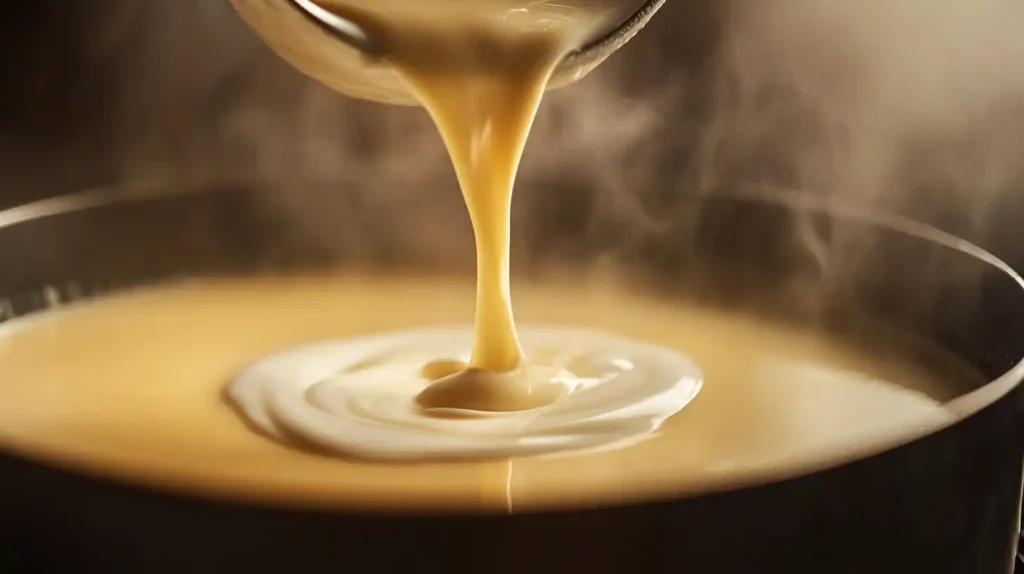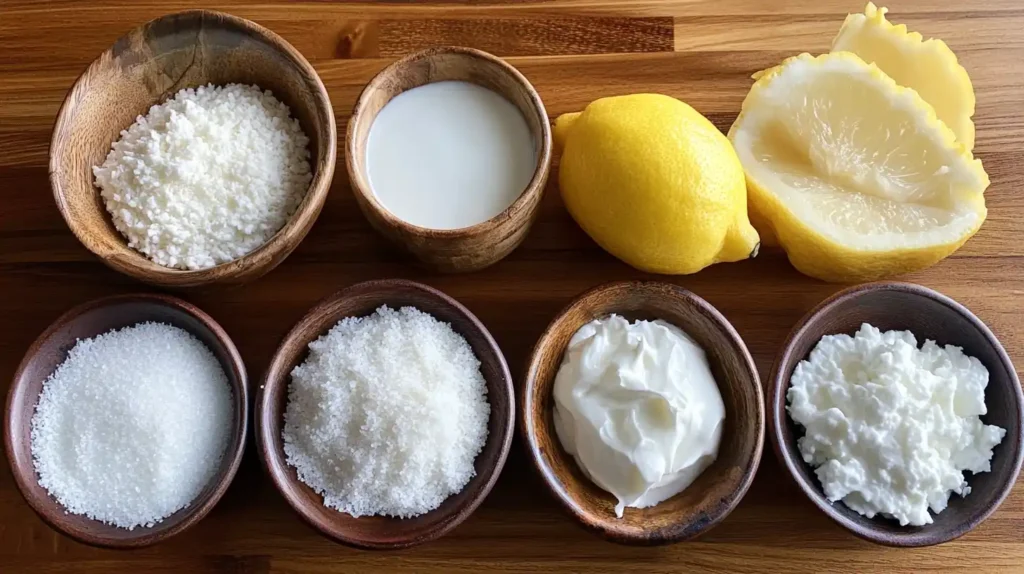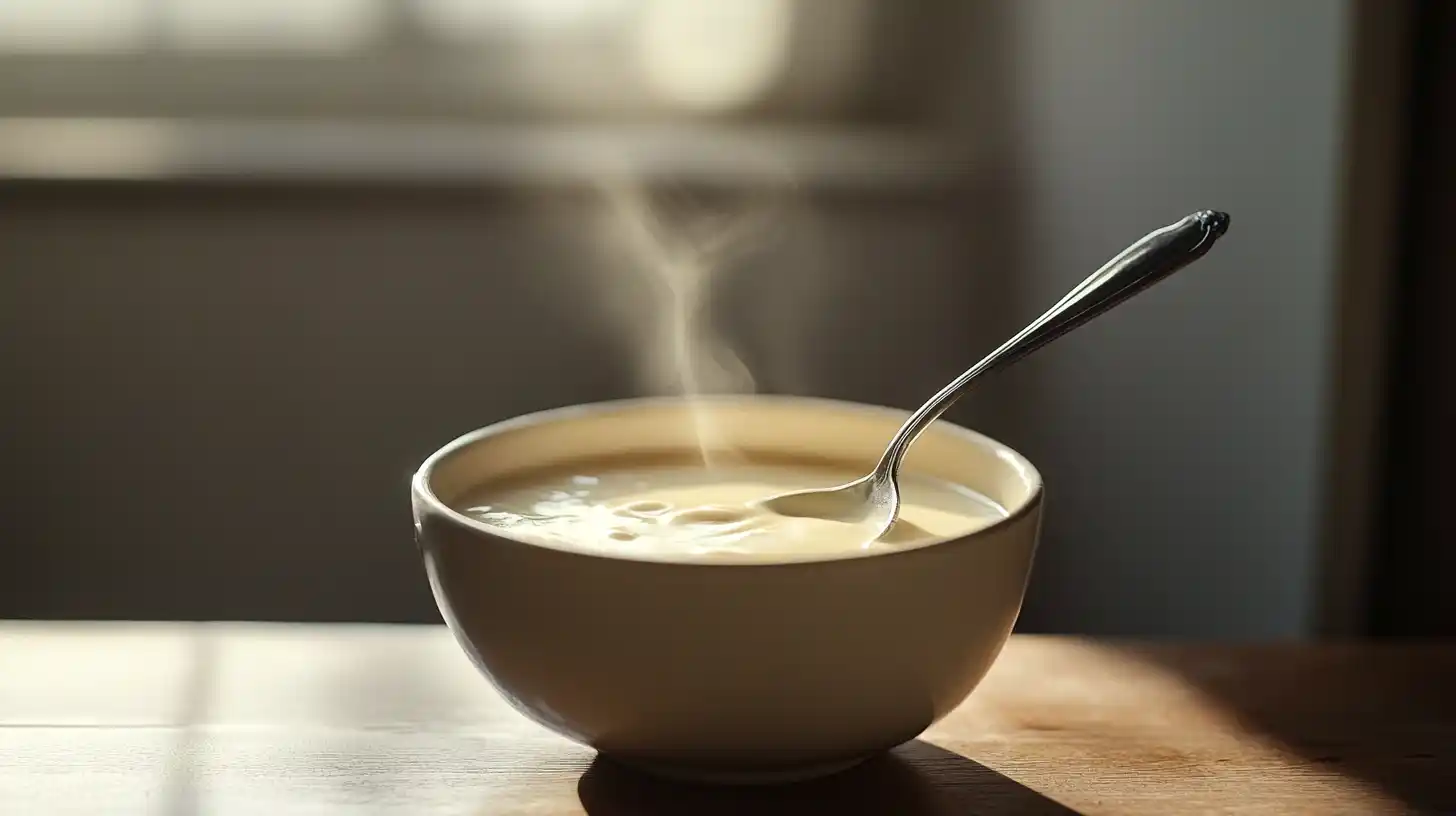Have you ever made a soup that turned out too spicy to enjoy? It happens to the best of us! While some love an intense heat, others might find it overwhelming. Thankfully, using cream to make soup less spicy is a popular method. But does it actually work, or does it just mask the heat?
The answer lies in science. The compound responsible for spice capsaicin reacts differently to various ingredients. Some break it down, while others simply dilute its effect. In this guide, we’ll explore how cream interacts with spiciness, alternative ways to fix spicy soups, and expert-recommended adjustments.
Table of contents
- What Makes Soup Spicy?
- The Science Behind Cream – Does Cream Make Soup Less Spicy?
- Other Ways to Reduce Spice – Does Cream Make Soup Less Spicy?
- Which Dairy Option is Best – Does Cream Make Soup Less Spicy?
- Which Non-Dairy Option Works Best – Does Cream Make Soup Less Spicy?
- Best Practices for Using Cream in Soup
- Frequently Asked Questions (FAQs)
- Final Thoughts: Does Cream Make Soup Less Spicy?

What Makes Soup Spicy?
Before fixing a spicy soup, it’s important to understand why it’s spicy.
- Capsaicin: The chemical in chili peppers that creates the burning sensation.
- Cooking time: The longer you simmer spicy ingredients, the stronger the heat.
- Oil-based spices: Some spicy oils linger in the broth, making them harder to dilute.
If you’re making a dish like cream of jalapeño soup, you might need a method to control the spice while keeping the flavors balanced.
1. Capsaicin – The Chemical That Causes Heat
The main reason your soup feels hot is capsaicin. This is the natural compound found in chili peppers. It binds to pain receptors in your mouth, sending signals to your brain that make it feel like your mouth is on fire!
Here’s something interesting: Capsaicin isn’t actually hot, it tricks your brain into thinking it is. That’s why even if you cool your soup, it can still feel spicy!
Which Ingredients Contain Capsaicin?
- Chili peppers – The biggest source of capsaicin!
- Paprika & cayenne powder – These are made from dried chili peppers.
- Spicy sauces – Hot sauce, chili paste, and sriracha add extra heat.
- Black pepper – While not as strong, it still adds a kick!
2. The More You Cook, The Hotter It Gets – Does Cream Make Soup Less Spicy?
Another reason soup can turn too spicy is cooking time. When you simmer soup for a long time, the capsaicin spreads, making the entire dish hotter.
Also, if you let soup sit overnight, it can become even spicier. This happens because the spicy oils mix deeper into the broth.
The Science Behind Cream – Does Cream Make Soup Less Spicy?
If your soup is too spicy, adding cream can calm the heat. But why does this work? The answer lies in science!
How Cream Helps – Does Cream Make Soup Less Spicy?
The secret to cream’s power against spice is casein, a protein found in dairy products.
- Casein binds to capsaicin, the compound that makes food spicy.
- Once casein attaches to capsaicin, it breaks it apart, reducing its effect on your taste buds.
- This is why dairy products, like cream, milk, and yogurt, help make spicy food more mild.
Unlike water, which only spreads the heat around, cream actually weakens the spice. This is why drinking water after eating something spicy doesn’t help, it just moves the capsaicin around your mouth!
2. The Role of Fat in Reducing Spice
Another reason cream works is fat. Capsaicin dissolves in fat, not in water.
- Cream is rich in fat, which helps absorb the spicy compounds.
- The higher the fat content, the better it works!
- This is why heavy cream is more effective than skim milk.
According to Campbell’s Soup, dairy is one of the best ways to fix an overly spicy soup. It doesn’t just mask the heat, it reduces it!
Does Cream Always Work?
While cream is a great way to reduce spice, it doesn’t always work perfectly. If your soup is extremely spicy, cream alone may not be enough.
- Some super spicy dishes have too much capsaicin for cream to fully neutralize.
- If your soup has a lot of chili oil, cream might not mix well with it.
If cream isn’t enough, don’t worry! There are other ways to tone down a spicy soup.

Other Ways to Reduce Spice – Does Cream Make Soup Less Spicy?
While cream is one of the best ways to fix a spicy soup, it’s not the only option. If your soup is still too hot, don’t worry there are several other tricks to balance the flavor.
1. Dilution – The Easiest Fix When Cream Doesn’t Work
One of the simplest ways to reduce spice is to dilute the soup.
- Add more broth or water to spread the spice across a larger volume.
- Mix in extra vegetables like carrots, potatoes, or beans to soak up the spice.
- If your soup is creamy, add more milk or coconut milk instead of water.
This method works best when you don’t want to change the soup’s flavor too much.
2. Sweeteners – A Secret Trick
Sugar and spice may seem like opposites, but a little sweetness can tone down the heat.
- Add a teaspoon of sugar or honey to balance the flavors.
- If your soup is tomato-based, try ketchup or a small piece of carrot for natural sweetness.
- Avoid adding too much sugar you don’t want your soup to taste too sweet!
3. Starch Absorption – A Clever Hack
Adding starchy foods helps absorb the spice, making the soup milder.
- Drop in a few chunks of potato and let them cook for 10–15 minutes.
- Stir in rice, pasta, or bread to soak up the spice.
- Remove the starchy ingredients before serving if you don’t want them in your soup.
This trick is fast and effective, especially for brothy soups.
4. Acidity – A Quick Flavor Fix
Adding acidic ingredients can cut through spicy heat and create a better balance.
- Squeeze in lemon or lime juice for a fresh, tangy taste.
- Stir in vinegar (apple cider, white vinegar, or balsamic).
- Add tomatoes if your soup allows tomatoes are naturally acidic!
Acidity doesn’t remove spice, but it tricks your taste buds into noticing other flavors instead.

Which Method is Best?
- If your soup is only slightly spicy, try cream or milk first.
- If the spice is moderate, use dilution or sweeteners.
- If the heat is very strong, try starch and acidity together.
By mixing these methods, you can adjust your soup’s spice level without ruining the flavor.
Which Dairy Option is Best – Does Cream Make Soup Less Spicy?
Now that we know cream can reduce spice, let’s explore which dairy products work best. Not all dairy is the same some options are more effective than others. The key factors are fat content and protein levels.
Heavy Cream – The Best Choice
- High fat content helps dissolve capsaicin quickly.
- Creates a rich, smooth texture in soups.
- Works well in creamy soups, like tomato or mushroom soup.
How to Use It:
- Stir in a few tablespoons gradually, tasting as you go.
- Add at the end of cooking to prevent curdling.
- Avoid boiling after adding cream heat gently.
Whole Milk – A Lighter Option
- Less fat than heavy cream but still helps.
- Keeps the soup light and smooth.
- Best for brothy soups where you don’t want it too creamy.
How to Use It:
- Add a quarter to half a cup slowly while stirring.
- If using low-fat milk, mix it with a little butter for extra fat.
Yogurt or Sour Cream – For Tangy Soups
- Adds a mild tangy taste, which balances spice.
- Works well in spicy soups like curries or chili.
- Best for thicker soups that can handle a little tartness.
How to Use It:
- Stir in plain yogurt or sour cream just before serving.
- If the soup is hot, mix it with a little broth first to prevent curdling.
Cheese – A Secret Ingredient
- Melts into soup, creating a rich, creamy texture.
- Works best in cheese-based soups like broccoli cheddar.
- Soft cheeses, like cream cheese, are great for thickening.
How to Use It:
- Stir in grated cheese while the soup is warm.
- For a smoother blend, melt it with a little milk before adding.
Which Dairy Option Should You Choose?
| Dairy Product | Best for | Fat Level | Effectiveness |
|---|---|---|---|
| Heavy Cream | Creamy soups (tomato, mushroom) | High | Very effective |
| Whole Milk | Lighter broths | Medium | Moderate |
| Yogurt/Sour Cream | Spicy soups (curries, chili) | Medium | Highly effective |
| Cheese | Cheese-based soups | High | Moderate |
The best choice depends on the type of soup you’re making and how much spice reduction you need.
Which Non-Dairy Option Works Best – Does Cream Make Soup Less Spicy?
If you don’t consume dairy, you can still reduce spice using plant-based options:
- Coconut Milk – A rich, fatty alternative that pairs well with spicy curries.
- Cashew Cream – A thick, smooth substitute for heavy cream.
- Oat Milk – Adds creaminess while keeping the flavor neutral.
For those following a dairy-free diet, coconut milk works well in recipes like seafood mix dishes.
Coconut Milk – The Best Dairy-Free Choice
- High in fat, which helps break down capsaicin.
- Adds a slight sweetness that balances spice.
- Works well in curries, Thai soups, and tomato-based soups.
How to Use It:
- Stir in half a cup at a time until the spice level is right.
- Use full-fat coconut milk for better results.
- Be mindful of the coconut flavor—it pairs best with bold spices.
Cashew Cream – A Smooth and Rich Option
- Thick and creamy, similar to heavy cream.
- Mild in flavor, so it won’t overpower the soup.
- Works well in vegetable soups, creamy broths, and chowders.
How to Use It:
- Blend soaked cashews with water until smooth.
- Stir in slowly, tasting as you go.
- If the soup is too thick, add extra broth to balance the texture.
Almond Milk – A Light and Neutral Choice
- Lower in fat than coconut milk or cashew cream.
- Works well in brothy soups rather than thick ones.
- Adds a mild nutty flavor that isn’t too strong.
How to Use It:
- Add half a cup gradually while stirring.
- If using unsweetened almond milk, mix it with a little oil for better fat content.
- Avoid heating it too much—some almond milk brands separate when boiled.
Oat Milk – A Subtle and Creamy Alternative
- Slightly thicker than almond milk, giving soups a smooth texture.
- Has a mild, neutral taste that blends well with most soups.
- Works best in potato soups, pumpkin soups, and creamy vegetable soups.
How to Use It:
- Stir in gently to avoid curdling.
- Add a little at a time until the spice level is balanced.
Which Non-Dairy Option Works Best?
| Non-Dairy Alternative | Best for | Fat Level | Effectiveness |
|---|---|---|---|
| Coconut Milk | Spicy curries, Thai soups | High | Very effective |
| Cashew Cream | Creamy vegetable soups | Medium | Highly effective |
| Almond Milk | Brothy soups | Low | Moderately effective |
| Oat Milk | Thick vegetable soups | Medium | Moderate |
The best choice depends on the type of soup you are making and how much spice you need to balance.
Best Practices for Using Cream in Soup
To ensure the best results when using cream in soup, follow these simple tips:
- Add cream gradually to avoid over-thinning the soup.
- Stir well to distribute it evenly.
- Use full-fat cream for better spice reduction.
- Avoid boiling after adding cream to prevent curdling.
Additionally, if your soup includes beef, ensuring it is properly sliced can enhance its texture and flavor.
How to Get Thinly Sliced Beef at Home
How to Get Thinly Sliced Beef at Home
To get thinly sliced beef at home, partially freeze the meat for 30-60 minutes to firm it up. Use a sharp knife to slice against the grain for maximum tenderness. A meat slicer can also help achieve uniform cuts. For extra precision, ask your butcher to slice it for you.
For a step-by-step guide, check out this detailed article: How to Get Thinly Sliced Beef at Home?
By following these best practices, you can create a perfectly balanced, flavorful soup with the right texture and spice level.
Frequently Asked Questions (FAQs)
Does cream completely remove spiciness?
No, cream does not completely remove spice, but it can make the soup less spicy. The casein protein in dairy binds to capsaicin, which helps reduce the burning sensation. However, if the soup is extremely spicy, you may need to combine cream with other methods, such as dilution or adding a sweetener.
Can I use yogurt instead of cream to reduce spice?
Yes! Yogurt works well because it contains both fat and protein, which help neutralize spice. It is especially effective in curry-based soups or Mexican dishes like spicy tortilla soup. However, yogurt has a slightly tangy taste, which might change the overall flavor of your soup.
What is the best dairy option to reduce spice?
Heavy cream is the best choice because it has the highest fat content, which helps break down capsaicin effectively. If you want a lighter option, whole milk or yogurt can also work. Cheese is another good choice for cheese-based soups, like broccoli cheddar or chili cheese soup.
Will adding too much cream ruin the flavor of the soup?
Yes, too much cream can make your soup too thick, too bland, or too heavy. The key is to add it gradually and taste as you go. If you accidentally add too much, you can fix it by adding more broth or a splash of lemon juice to bring back some brightness.
Does heating or cooling affect how cream balances spice?
Yes! If you boil the soup after adding cream, it may curdle, changing the texture. The best way to use cream is to stir it in at the end when the soup is warm but not boiling. This helps keep it smooth and creamy.
Are there any non-dairy ingredients that work as well as cream?
Yes! If you don’t use dairy, you can try coconut milk, cashew cream, or oat milk. These alternatives contain enough fat to reduce spice, though coconut milk has a slightly sweet taste that works best in spicy curries or Thai soups.
Final Thoughts: Does Cream Make Soup Less Spicy?
Yes, cream can make soup less spicy! The casein protein in dairy helps break down capsaicin, which is the compound responsible for the burning sensation. The fat content in cream, milk, yogurt, and cheese also helps neutralize the heat, making the soup more enjoyable.
However, cream alone might not always be enough. If your soup is extremely spicy, you can combine cream with other methods, such as:
- Dilution – Adding more broth or water to spread out the spice.
- Sweeteners – Using a small amount of sugar or honey to balance the heat.
- Starchy Foods – Adding potatoes, rice, or pasta to absorb the spice.
- Acidic Ingredients – Using lemon juice, vinegar, or tomatoes to cut the heat.
If you don’t use dairy, coconut milk, cashew cream, almond milk, and oat milk are great alternatives that can also help tone down spice.
The best approach depends on the type of soup you’re making and your personal taste preferences. By combining these methods, you can adjust the spice level without ruining the original flavor of the dish.
Next time your soup turns out too spicy, you’ll know exactly what to do! 😊

